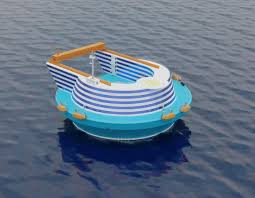
Breaking News
 Testing My First Sodium-Ion Solar Battery
Testing My First Sodium-Ion Solar Battery
 3D Solar towers boost electricity production by around 50%
3D Solar towers boost electricity production by around 50%
 Promising results for dynamic wireless charging in real-world road tests
Promising results for dynamic wireless charging in real-world road tests
 Civil War!! In 2 Days Food Stamps Run Out and America is in Trouble | Redacted
Civil War!! In 2 Days Food Stamps Run Out and America is in Trouble | Redacted
Top Tech News
 Graphene Dream Becomes a Reality as Miracle Material Enters Production for Better Chips, Batteries
Graphene Dream Becomes a Reality as Miracle Material Enters Production for Better Chips, Batteries
 Virtual Fencing May Allow Thousands More Cattle to Be Ranched on Land Rather Than in Barns
Virtual Fencing May Allow Thousands More Cattle to Be Ranched on Land Rather Than in Barns
 Prominent Personalities Sign Letter Seeking Ban On 'Development Of Superintelligence'
Prominent Personalities Sign Letter Seeking Ban On 'Development Of Superintelligence'
 Why 'Mirror Life' Is Causing Some Genetic Scientists To Freak Out
Why 'Mirror Life' Is Causing Some Genetic Scientists To Freak Out
 Retina e-paper promises screens 'visually indistinguishable from reality'
Retina e-paper promises screens 'visually indistinguishable from reality'
 Scientists baffled as interstellar visitor appears to reverse thrust before vanishing behind the sun
Scientists baffled as interstellar visitor appears to reverse thrust before vanishing behind the sun
 Future of Satellite of Direct to Cellphone
Future of Satellite of Direct to Cellphone
 Amazon goes nuclear with new modular reactor plant
Amazon goes nuclear with new modular reactor plant
 China Is Making 800-Mile EV Batteries. Here's Why America Can't Have Them
China Is Making 800-Mile EV Batteries. Here's Why America Can't Have Them
Floating nuclear power plants to be mass produced for US coastline

Nuclear power is enjoying something of a renaissance with many countries turning to the atom to meet their energy needs. However, the bottleneck for increasing the nuclear sector isn't with manufacturing reactors. It's the civil engineering side of things, with most of the time and cost going to securing real estate for building the foundations and buildings for the plant as well as navigating a bewildering maze of permits, licenses, and planning permissions.
To get around this as well as speed up production, Core Power plans to use Generation 4 reactor design combined with conventional modular shipbuilding methods to crank out floating nuclear plants on an assembly line basis. To reflect this, the company is referring to this as the "Liberty program" in a call back to the famous Liberty ships of the Second World War that were built at a speed of as fast as four days for one hull.
The heart of these atomic Liberty ships is a compact molten salt reactor, which is an advanced version of a design first developed in the 1950s. Instead of fuel rods stuck in pressurized water as a neutron moderator and coolant, these reactors use nuclear fuel mixed with molten salt at normal atmospheric pressure.
Though it has its disadvantages, molten salt reactors have the pluses of being compact, mechanically simple, are cooled largely by passive circulation, and aren't prone to runaway nuclear meltdowns – which should make the neighbors happy. They're also easy to service because the spent fuel can be filtered out of the salt mixture and replaced with fresh fuel as a matter of course. However, Core Power claims that their reactors won't need refueling during their service life.
The clever bit is that by installing the reactors in ships, they can be easily moved to where they are needed without dealing with quite so much red tape or environmental exclusion zones and they can be moved out if demand changes or the local political climate changes for the worse. And they can be returned to a central facility for maintenance or disposal. In addition, by siting plants along coast lines, they are near areas of peak demand.
The idea of floating nuclear plants isn't new. Reactors have been installed in submarines and ships since the USS Nautilus in 1954 and the first floating power plant dates back to 1967. The idea was revived by Russia in 2019 and the Americans and British have shown increased interest in recent years.

 China Innovates: Transforming Sand into Paper
China Innovates: Transforming Sand into Paper

